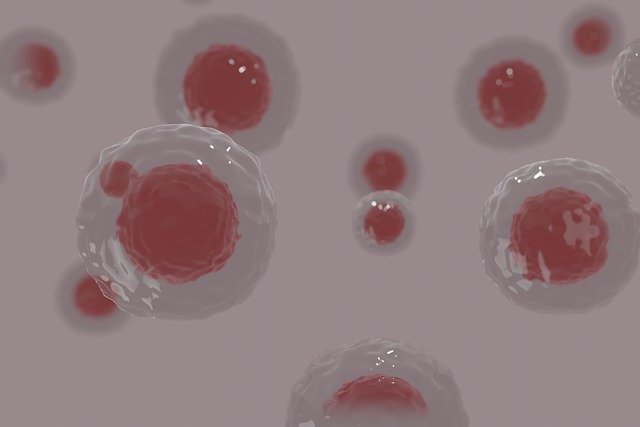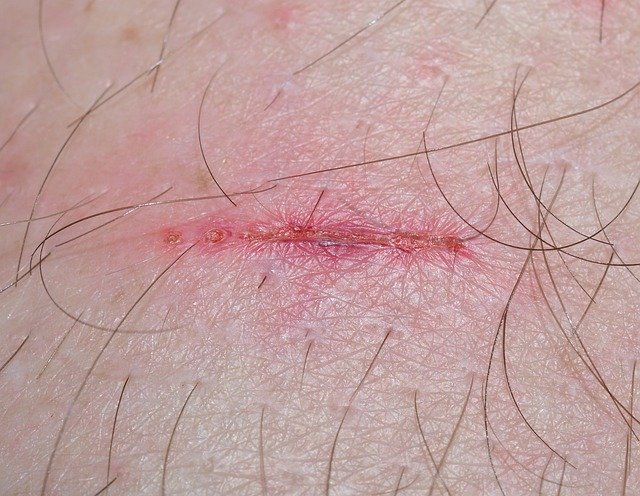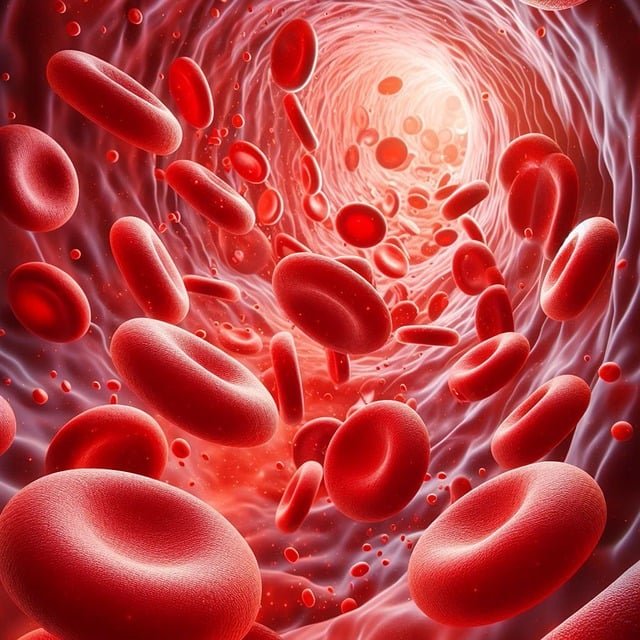CELL INJURY :
Introduction :-
The term “cell injury” refers to all of the stress a cell experiences as a result of etiologic factors, which alters both its internal and exterior environment. The body’s cells generally have built-in mechanisms to some extent adapt to environmental changes. The two factors listed below can affect and change the cellular response to stress:
i) Host factors i.e. the type of cells and tissue affected.
ii) Factors related to the injury agent i.e. the extent and type of cell injury.
The following are possible cellular reactions to cell injury:
1. Cells can adapt to morphological changes resulting from greater functional demands and eventually return to normal when the stress subsides.
2. Reversible cell damage occurs when cells are exposed to mild to moderate stress. Irreversible cell damage occurs when cells are exposed to prolonged or severe stress that causes cell death.
3. Metabolites may accumulate within cells (intracellular accumulation) or after-effects of reversible cell damage may remain within the cells as evidence of intracellular damage.


Etiology /Causes of Cell Injury :-
Cell injury can result from a variety of factors, including the mechanical stress of a car crash or more subtle cellular abnormalities like a mutation that results in the absence of an essential enzyme that is necessary for proper metabolic activity. The majority of harmful stimuli fall into the following general groups.
1. Hypoxia and Ischaemia :-
In common, oxygen is required by cells in numerous tissues to create vitality and carry out metabolic forms. Hypoxia, or low oxygen levels, avoids the cells from performing their capacities. The most frequent reason why cells are injured is hypoxia. There are two conceivable causes of hypoxia:
1. The most frequent mechanism of hypoxia cell harm is interrupted blood stream to cells, or hypoxic ischemia.
2. In expansion to disturbance, other components that influence the blood supply can moreover deliver hypoxia, such as sicknesses that influence the oxygen-carrying ruddy blood cells (such as frailty or carbon monoxide poisoning), heart conditions, lung conditions, and increased tissue request.

2. Chemical Agents and Drugs :-
Making a list of substances that can damage cells is an impossible task. In hypotonic amounts, simple substances such as salt and glucose can directly or indirectly damage cells by disrupting the fluid and electrolyte balance within the cell. Oxygen is dangerous even in large doses. Poisons such as arsenic, cyanide, and mercury in trace amounts can kill a person within minutes to hours if they cause enough damage to cells. Our daily companions include pesticides, herbicides, and environmental pollutants; industrial and occupational hazards such as asbestos and carbon monoxide; and recreational drugs such as alcohol. There is a wide variety of medicines, many of which have harmful side effects.
3. Infectious Agents :-
Making a list of substances that can damage cells is an impossible task. In hypotonic amounts, simple substances such as salt and glucose can directly or indirectly damage cells by disrupting the fluid and electrolyte balance within the cell. Oxygen is dangerous even in large doses. Poisons such as arsenic, cyanide, and mercury in trace amounts can kill a person within minutes to hours if they cause enough damage to cells. Our daily companions include pesticides, herbicides, and environmental pollutants; industrial and occupational hazards such as asbestos and carbon monoxide; and recreational drugs such as alcohol. There is a wide variety of medicines, many of which have harmful side effects.
4. Immunologic Reaction :-
Although the immune system is crucial for protecting the body from infectious diseases, immune responses can also harm cells. Autoimmune disorders are caused by harmful responses to endogenous self antigens Another major factor contributing to cell and tissue damage is immune responses to a variety of external stimuli, including viruses and environmental chemicals.
5. Nutritional Imbalances :-
Nutrient imbalances can arise from either an excess or a deficiency.
1. Overall nutrient deficiencies, such as hunger, protein calorie deficiencies, such as marasmus and kwashiorkor, mineral deficiencies, such as anemia, or trace element deficiencies can all lead to nutritional deficiency illnesses.
2. An issue facing wealthy countries is nutritional excess, which leads to obesity, atherosclerosis, heart disease, and hypertension.
6. Genetic Abnormalities :-
Genetic abnormalities can result in very distinct clinical symptoms, ranging from congenital birth defects to anemia. These abnormalities can be as severe as an extra chromosome, as in Down syndrome, or as minor as a single base pair change that causes an amino acid substitution, as in sickle cell anemia. Reduced protein function, such as enzyme deficiencies in inherited metabolic diseases, or the accumulation of damaged DNA and misfolded proteins, are examples of genetic defects that can damage cells, causing cell death when they can no longer be repaired. Common human polymorphisms, or variations in DNA sequences, can also affect a cell’s susceptibility to damage from toxins and other environmental stressors.
7. Physical Agents :-
Mechanical trauma, temperature extremes (burns and extreme cold), sudden fluctuations in pressure within the atmosphere, radiation, and electric shock are examples of physical agents that can harm cells.
8. Idiopathic condition :-
Idiopathic refers to “unknown cause”. Furthermore, the exact cause of a great deal of diseases remains unknown, despite the fact that we know a great deal about their beginnings. For example, 90% of all cases of high blood pressure are caused by idiopathic or essential hypertension.
In a similar vein, many tumors’ precise cause is still unknown.
Summary of Cell Injury :-
Cell injury is the outcome of many pressures a cell experiences from etiologic factors, which alters the cell’s internal and external environment. The kind of cell and tissue involved, as well as the degree and kind of cell damage, all affect how cells react to stress. Cells first adjust to the changes brought about by the harmful agent and may return to normal. Short-term, mild to moderate stress results in reparable cell damage; prolonged, severe stress results in cell death. Hypoxia-ischemia is the most significant of the many etiologic causes; others include chemical and physical agents, microorganisms, immunity, aging, etc
Cell injury, either reversible or irreversible, can arise from damage to the normal cell caused by one or more of the etiologic factors mentioned above. Complex and diverse biochemical system changes underlie both reversible and irreversible cell injury caused by different agents. However, regardless of the type, the majority of cell injuries caused by different agents often follow this similar scheme:
1. Aspects related to the causative agent and the recipient :-
As already mentioned, the following variables related to the etiologic agent and the host cell influence the outcome of cell damage:
i) Characteristics, duration, and intensity of the noxious agent: The type, length, and intensity of the stimulus determine how much damage the tissue is damaged. For example, minute amounts of chemical toxins or short periods of ischemia result in reversible cell damage, while larger amounts of the same chemicals or prolonged ischemia result in cell death.
ii) Type, condition, and adaptability of the target cell: The susceptibility of the cell to damage, its nutritional and metabolic status, and its adaptability to harsh environments influence how much damage the cell can withstand. For example, skeletal muscle can withstand sustained hypoxic damage, while cardiac muscle can only withstand irreversible cell damage after sustained ischemia caused by complete coronary artery occlusion lasting more than 20 minutes.
2. Similar underlying processes :-
Whatever the circumstances, all forms of cell injury are caused by the following fundamental intracellular biochemical phenomena:
i) Mitochondrial damage leading to ATP depletion.
ii) Damage to the cell membrane that interferes with transmembrane and metabolic exchanges.
iii) Toxic free radical release.
3. Typical morphologic alterations :-
The initial signs of cell injury from different agents are biochemical and molecular changes, which are linked to the development of ultrastructural alterations in the damaged cell. But gradually, there are noticeable, microscopic alterations to the morphology of the organs and cells. Early morphologic changes of reversible cell injury, such as hydropic swelling, are observed, whereas later morphologic changes of cell death, such as myocardial infarction, are observed.
4. Consequences for function and the course of the illness :-
Cell damage eventually has a negative impact on cellular function, which has implications for the body. As a result, clinical characteristics such as symptoms and indicators would manifest. In contrast to the disease’s biologic behavior, the prognosis or future course will rely on how well the patient responds to treatment.
The two most prevalent forms of cell injury in humans are decreased oxygen delivery to the tissues (hypoxia) and disruption of the blood supply (ischemia). Therefore, a detailed discussion of the pathogenesis of hypoxic and ischemic cell injury follows, along with a brief discussion of the pathogenesis of physical and chemical agents, primarily ionizing radiation.
